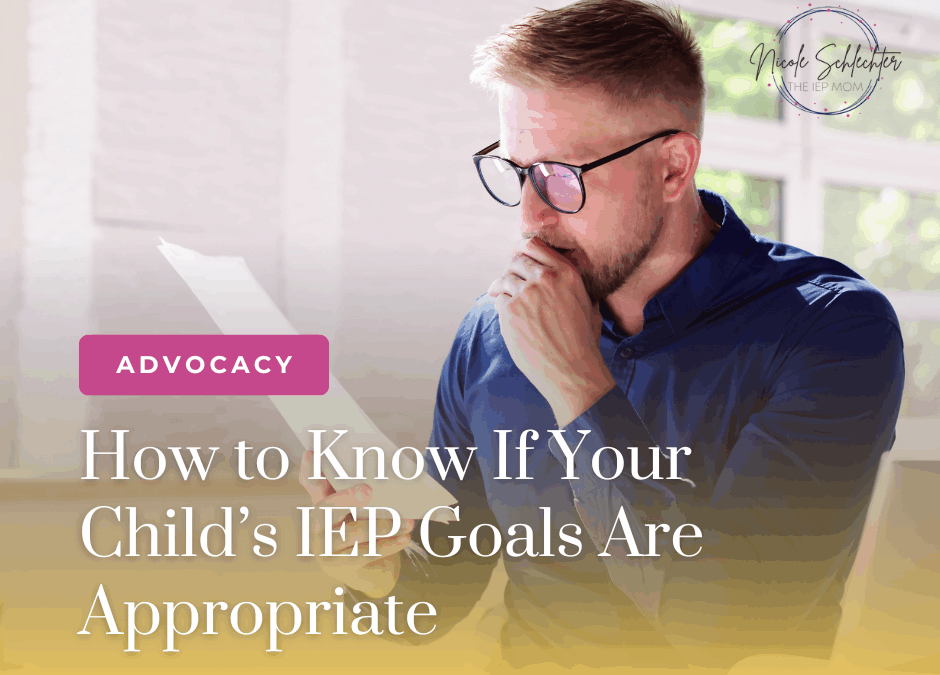How to Know If Your Child’s IEP Goals Are Appropriate
When it comes to your child’s Individualized Education Program (IEP), the goals are the foundation for their growth. But how do you know if those goals are truly helping your child make progress?
In this guide, we’ll walk through where IEP goals come from, how they’re measured, and what parents can do to make sure their child’s plan is working as intended.
1. Where IEP Goals Come From
IEP goals are created from data—not assumptions. The IEP team uses information from several sources, including:
-
Formal assessments: standardized academic and cognitive evaluations.
-
Progress monitoring data: classroom performance, grades, and work samples.
-
Teacher and parent input: observations, home experiences, and insights about your child’s strengths and challenges.
This data helps the IEP team determine your child’s areas of need. Each area of need should have a corresponding measurable goal that supports skill growth.
2. What Makes an IEP Goal Appropriate
An appropriate IEP goal should be individualized, measurable, and attainable.
Ask yourself these questions:
-
Does this goal address one of my child’s real needs?
-
Is the goal based on accurate data?
-
Can it be clearly measured?
-
Does it describe what success looks like?
A good example:
“By May 2026, the student will read 120 words per minute with 95% accuracy on grade-level passages in 3 out of 4 trials.”
A poor example:
“The student will improve reading.”
If you can’t visualize how a goal will be measured—or if it sounds vague—it’s time to ask for clarification.
3. How IEP Goals Are Measured
Each goal should include:
-
Baseline data: the child’s current level of performance.
-
Progress monitoring method: the specific tools used to measure improvement (e.g., weekly probes, running records, or behavior data).
-
Reporting schedule: how often progress is shared with parents (usually quarterly).
As a parent, you should feel confident asking:
“What data are you collecting to show my child is making progress toward this goal?”
If the school can’t answer with concrete data, the goal may need to be rewritten or clarified.
4. When IEP Goals Are Considered Complete
A goal is complete when your child consistently demonstrates mastery of the skill over time and across environments (classroom, small group, independent work, etc.).
When goals are met, the team should:
-
Celebrate success 🎉
-
Write new, higher-level goals
-
Review services and accommodations to ensure continued progress
If a goal isn’t met, dig deeper into why. It could mean:
-
The goal was unrealistic
-
The teaching approach wasn’t effective
-
The data wasn’t collected accurately
5. What Parents Can Do
You don’t have to wait for the annual IEP meeting to check on your child’s progress. Here’s how to stay proactive:
-
Ask to see progress data—not just summaries.
-
Review the IEP regularly to make sure goals are still appropriate.
-
Collaborate with teachers about what’s working and what’s not.
-
Seek an expert IEP review if you’re unsure whether the goals are measurable or aligned with your child’s needs.
Final Thoughts
IEP goals are the heart of your child’s plan. When they’re data-driven, measurable, and tailored to your child, they can lead to real, meaningful progress.
If you’re not sure whether your child’s IEP goals are appropriate or effective, Nicole Schlechter Advocacy can help.
✨ Schedule an IEP Second Opinion Review to get expert insight into your child’s goals and identify opportunities for growth or set up a free consultation HERE.

